A half-hour cut-up musical about attempting to settle down during the subprime mortgage crisis, incredible.


A half-hour cut-up musical about attempting to settle down during the subprime mortgage crisis, incredible.


Joseph comes to visit his dying father and gets trapped in a hazy somnambulist stuttering time-loop zone. I didn’t like the devil man who destroys bird nests. I guess it’s a Bruno Schulz adaptation, but the story is less important than the Quays using their little puppets to create images nobody has ever seen before.


–
Ancha es Castilla, N’importe Quoi (2014, Sergio Caballero)
Extremely homemade puppetry, as in Sergio is refusing to use any construction materials that weren’t already in the house – if it didn’t say 2014 I’d swear this was a pandemic project. Divided into chapters/episodes, like the Quay (and as hard to follow), but more primitive and absurd.



Glass Life (2021, Sara Cwynar)
Photo-studio collage scroll with extreme digital compositing, music and voiceover tracks reinforcing or canceling each other, choice quotes from every modern philosopher, many objects and alphabets recognized from the gallery exhibit we saw, this 20-minute film itself refactored from a different exhibit. Daniel Gorman gets it.
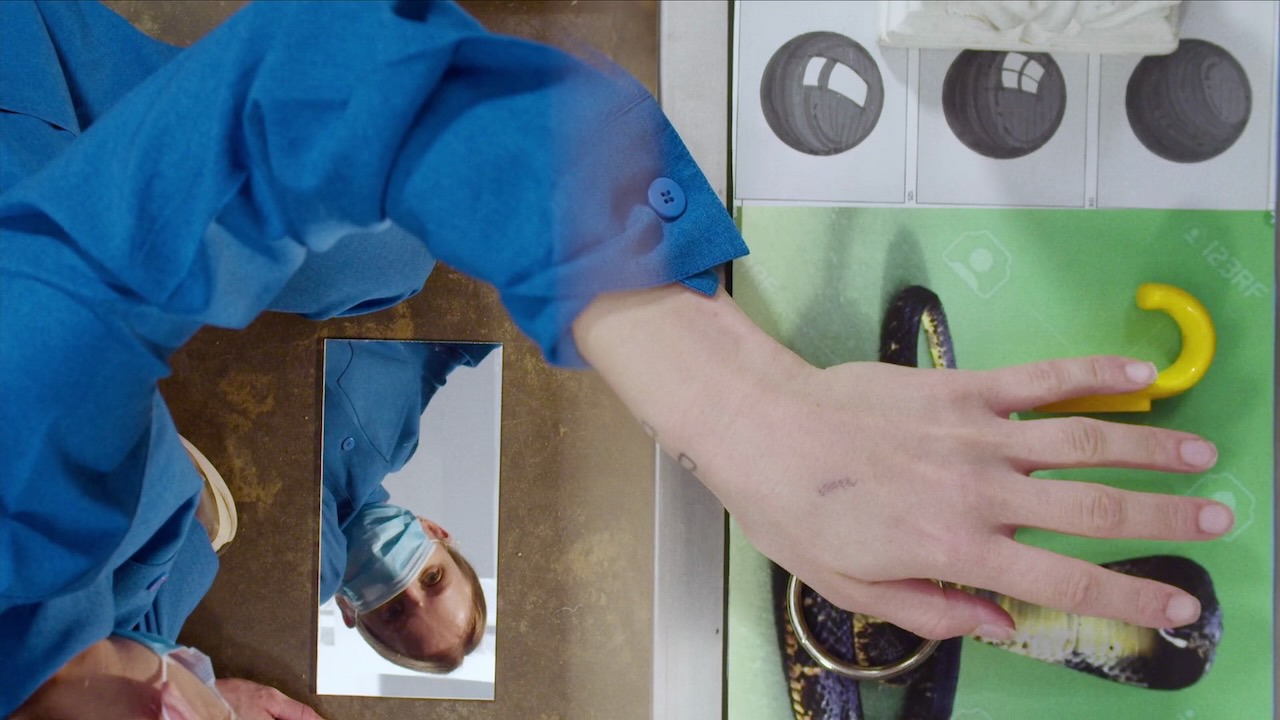
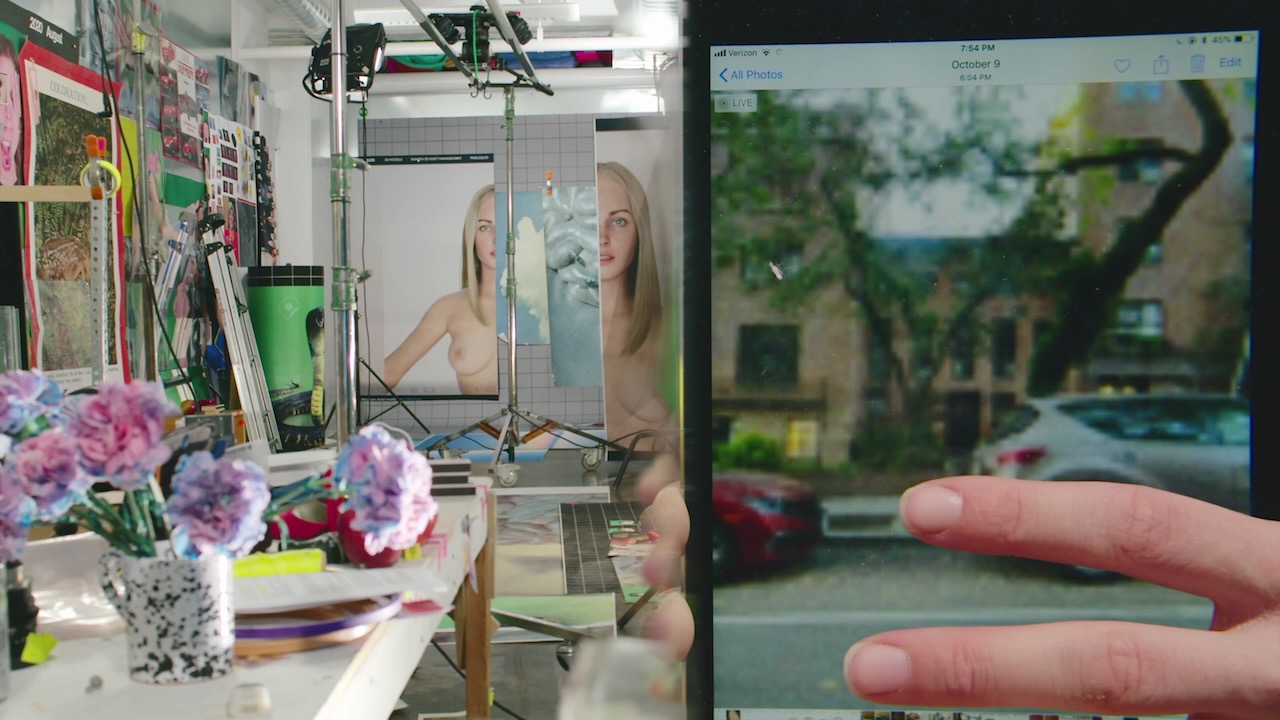
–
Neighbours (1952, Norman McLaren)
Two guys get along until a sweet-smelling flower grows on their property line and they ultimately murder each other’s families and each other to gain possession of it. It’s bad politics, say both Alex and McLaren’s studio boss, but terrific live-action stop-motion, and the source of the Mr. Show knees-levitation effect.
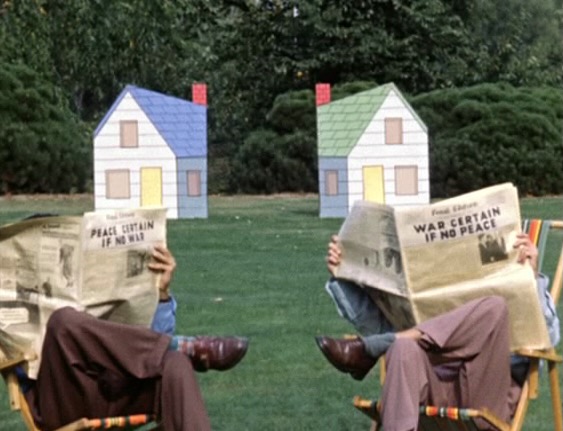
–
Oz: The Tin Woodman’s Dream (1967, Harry Smith)
Smith loves transformative destruction, so the woodman whacks a tree with his ax, turning it into a pile of furniture and creatures, which eventually whirl around to form mystical fountain patterns. Psychedelic kaleidoscope setup starts with a Suspiria dance and leads to his most magickal images yet. Hoping to see this again next year with a live John Zorn performance, so instead of being obvious and playing Zorn with it now, I put on the middle third of Prefuse 73 One Word Extinguisher, which worked great during the dance scenes.
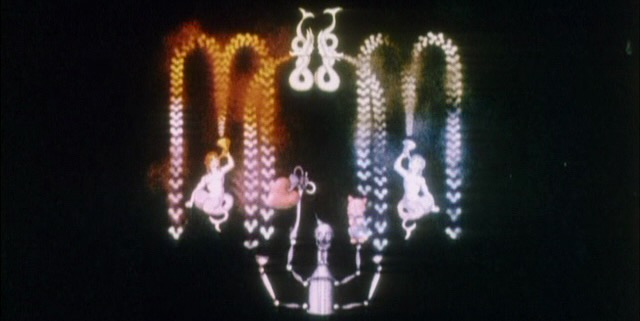
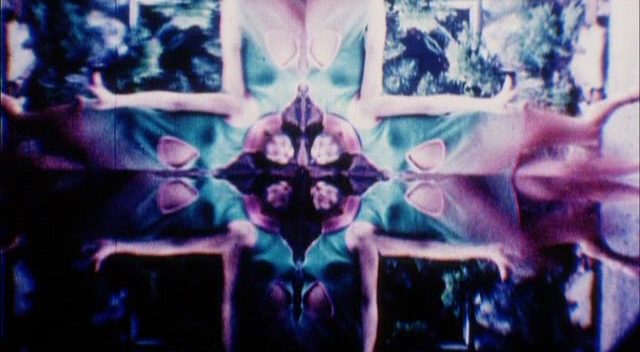
–
Ghosts Before Breakfast (1928, Hans Richter)
When Tom Regan said “Nothing more foolish than a man chasing his hat,” he had probably just watched this, a silly movie about flying hats and the men who chase them. Fun to see stop-motion with live actors 24 years before the McLaren short. My version has a new Sosin score since the original sound version was burned by nazis.
Lost hat:
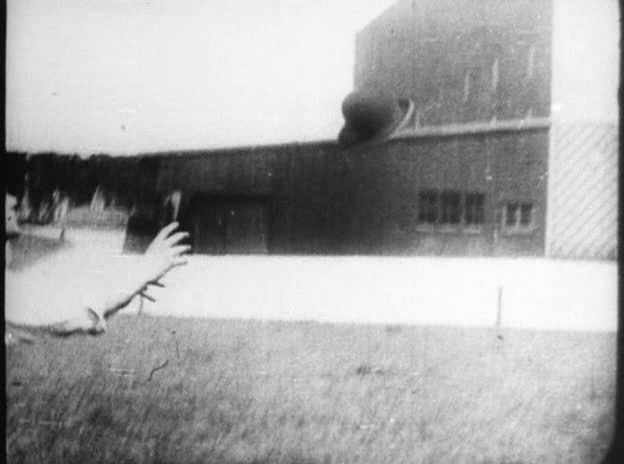
Lost head:
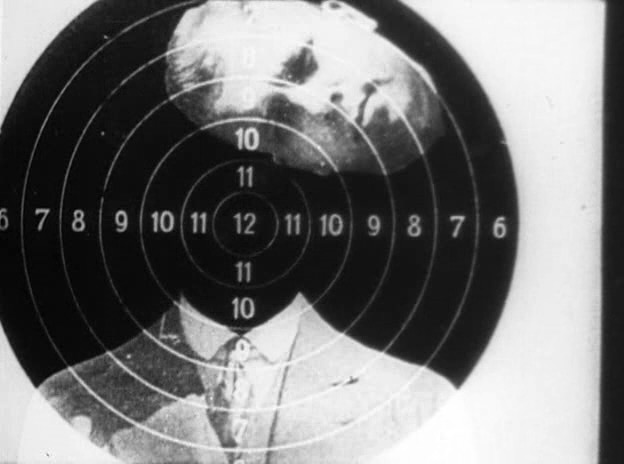
–
Cosmic Ray (1962, Bruce Conner)
Nude dancing and fireworks set to a boogie-woogie Ray Charles song, after an excessive amount of countdown leader. It’s Conner, so there are quick shots of nationalism, Mickey Mouse, the atom bomb.
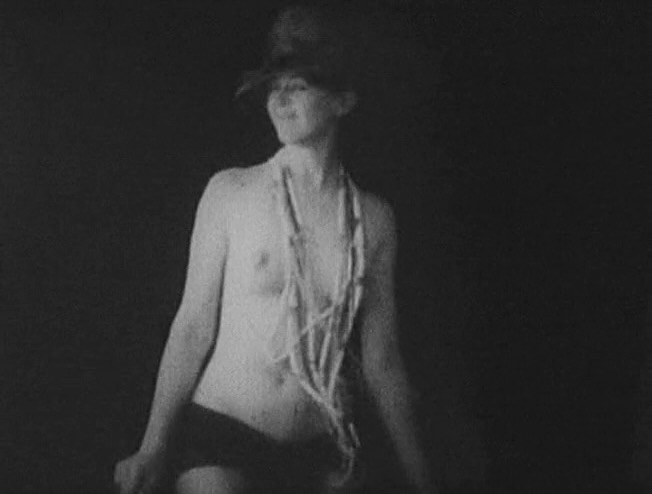
–
Walking (1968, Ryan Larkin)
More and less abstractly-rendered people and their walk cycles. Now that I’ve seen the Hubley short and the Disney doc about birds, that’s all the 1969 oscar nominees, and I’m gonna say they are all winners.
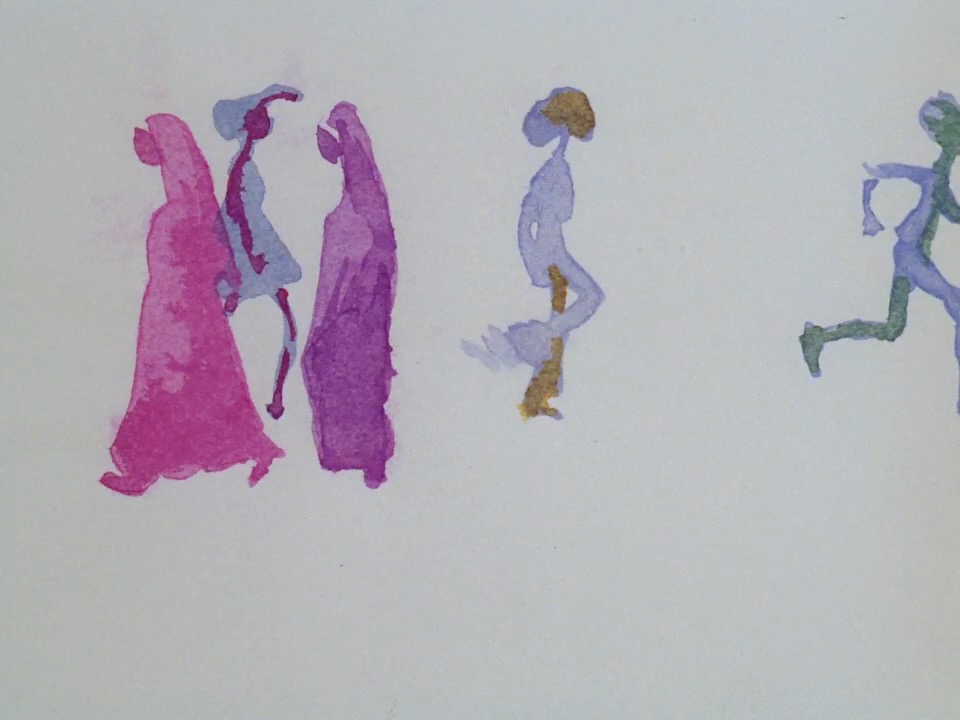
–
The Man on the Flying Trapeze (1954, Ted Parmelee)
Speaking of Hubley, here’s a UPA short. Talentless loser’s girl Fifi runs away with the circus to be with the handsome and graceful trapezeist Alonzo, turns out she’s a gold digger who leaves every man after they’ve showered her with gifts. Maybe the Popeye or W.C. Fields versions are better.
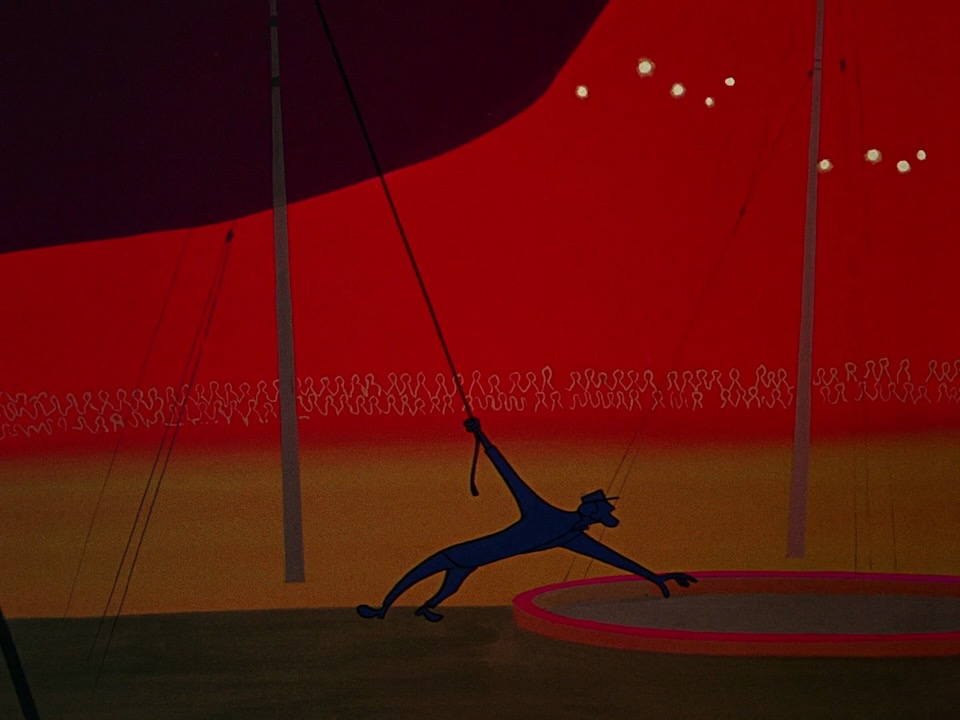
–
The Daughters of Fire (2023, Pedro Costa)
A Costa musical: after six minutes of split-screen, three women singing about their suffering, the last two minutes is landscapes. Paired at Cannes with Wang Bing’s Man in Black.

Continuing in the ever-darker visual trajectory of his previous films, in Daughters of Fire Costa pushes even further towards an obsidian palette … Over a string quartet rendition of 17th-century violinist and composer Biagio Marini’s Passacaglia (Op. 22), the three women, all professional singers, intone a hymn-like song whose lyrics speak of solitude and suffering, toil and exhaustion, and fortitude in the face of neglect. Given that the women are Black and singing in Creole, and that the themes they invoke are familiar from Costa’s films about Cape Verdean immigrants, it’s a surprise to learn from the end credits that the lyrics belong to a traditional Ukrainian lullaby.

–
Bleu Shut (1971, Robert Nelson)
Goofy prank film with structuralist tendencies – a no-stakes boat-name guessing game punctuated by half-minutes of weirdness (naked man in mirror chamber, dog gets Martin Arnolded, scenes from classic films, porn with intertitles). After minute three, a woman explains the rules of the movie and gives some coming attractions. I once saw about a third of this from one room away at an art gallery, maybe the same day we watched The Clock, and have wondered about it ever since.
It’s 19 minutes before either guy gets a single name right. The game show is abandoned towards the end for three minutes of people sticking their tongues out, then Nelson explains what the movie has been about, or he starts to before he’s interrupted by technical difficulties. Chuck Stephens did a Cinema Scope writeup, but I feel I’ve covered things pretty well.

–
The Garage (1920, Roscoe Arbuckle)
Our guys work at a garage, managing to get every thing and everyone covered in black oil without making any racist jokes, nice. The boss (a White Zombie witch doctor) has a cute daughter whose annoying beau manages to burn the place down, and it becomes a rescue operation. I got a good laugh from the ending of the Buster-has-no-pants segment.

Naked Blue (2022, Mati Diop & Manon Lutanie)
Not actually naked, but wearing a blue skeleton suit, a girl is hanging around a studio, then the smoke machine turns on and she dances for a camera, but not ours, which seems more of a low-fi behind-the-scenes angle, giving the sense of a backstage parent filming their kid’s motion capture performance for a video game or music video. No sync sound, big classical music slapped on top of it – oh, now I see the music is the whole point of this, it’s a new piece by Devonté Hynes. The dancing girl is the daughter of Valeria Bruni Tedeschi and Louis Garrel.

–
Five Days Till Tomorrow (2022, Lewis Klahr)
Klahr does more of his thing, this time to a minimalist piano piece. There are recurring characters but I couldn’t come up with a story except maybe “Luchador at the World’s Fair is haunted by circular objects.” I like how he uses cut-out characters with missing edges or word-bubble fragments, character art perfection not being the goal, also dig the subliminal flash-frame edits.


–
Om (1986, John Smith)
This guy again. Really good gag short, a misty monk turns out to be a barber’s cig-smoking customer, his tape-looped infinite om doubling as the sound of the electric razor.

–
Atman (1975, Toshio Matsumoto)
This is the Funeral Parade of Roses director pulling out some Takashi Ito moves, spinning around a seated demon in a breezy outdoor space, the camera moving and zooming at every speed from freeze-frame to freak-out. Pretty nice weirdo-loop music by Yoko Ono’s first husband.

–
Relation (1982, Toshio Matsumoto)
Another short from the long gap between Funeral Parade and Dogra Magra. Early 80s video art that actually holds up. Starts with an ocean scene split-screen at the horizon line, with the sky in fast-motion over a slow sea, then adds more frame splits and pictures-in-pictures after replacing the clouds with a left-to-right scrolling graphic finger, making the ocean look like a claw-machine of the gods.

–
How to Conduct a Love Affair (2007, David Gatten)
Crossfaded shots of (perhaps) large wrinkly paper sheets with charcoal drawings hanging under a slight breeze. Then bottles and hands, a bit of a nice green color after I’d thought it was a black and white movie. Opens with still text about patience in love affairs, ends with crossfaded sentences on black about colors and waiting, all silent.
–
Swain (1950, Gregory Markopoulos)
Young man is freaking out at the zoo so he goes to the sculpture park instead and has a nice wholesome time. He moves on to the botanical garden, but he’s being chased by a bride. Pretty sweet despite the quality of my copy – don’t suppose I’ll ever have the chance to see this properly. The Maya Deren vibes are pretty strong. Silent, so I played the first three tracks of Def Jux Presents volume 1, as the director no doubt intended. What ever happened to Cannibal Ox… oh wow, their third album came out this year and nobody liked it.

–
Bliss (1967, Gregory Markopoulos)
Vacation slides cut into vertical strips and visually jukeboxed together, flashing and overlaying, then joined by burning icons. I turned off RJD2 because this one has brief barnyard sounds over black halfway through, but then it’s back to silent church strobing for the second half.
–
Dance Chromatic (1959, Ed Emshwiller)
Ed edits a dancer in time and space across the screen, turning her into a graphic element, then does motion paintings in response to her moves. Very cool, somebody get Norman McLaren on the phone. Clangy percussion score.

–
The Bones (2021, Cociña & León)
Oh hell yeah. It’s got the house-destruction and wall-paint-creep from Wolf House and the walking-in-place trick from the PJ Harvey video, but the focus this time is stop-motion puppets. A girl unearths a pile of bones, reverse-burns them into a jumble of fleshy body parts, then Mr. Potato-Heads them in various configurations, marries them to each other, and disappears. Presented as if it were a reconstructed film from 1901, but even if so, there was no need to distress the soundtrack (increasingly disturbed piano music) since they didn’t have audiotape in 1901. Also, having just watched Leaves from Satan’s Book (1921), I can vouch that movies back then were not as satanic as this one.
Zero Kama in the studio:


–
Conversations of Donkey and Rabbit (2020, Ildikó Enyedi)
Are there really 20+ of these? I don’t think so. Long distance conversation: Rabbit has been reading Plato and is excited about birds and flowers, Donkey casually disagrees with her about how trees work. Nicely staged and photographed, very pandemic-feeling.

J.S. Bach Fantasy in G Minor (1965)
Organist wedges an apple in his mouth and gets to work. The rest is a Bach music video, focused on decaying walls, locks and grates, with stop-motion interludes of gashes and holes appearing in pulsating rows. Finally all the doors are thrown open and the camera rushes into the streets, confronted with a whole new world of decaying walls and locks.

–
Et Cetera (1966)
Exuberant little movie with better music than the Bach (sorry). Three parts in seven minutes, each piece an action that reaches a loop point then fullscreen letters exclaim ETC, ETC, ETC. Of course the film begins with FINE so when it reaches the end, the entire piece is a loop, ETC ETC, until the film material melts in lovely stop-motion.

–
Punch and Judy (1966)
Incredible, two puppets fight over the price or possession of a live guinea pig, burying and mutilating each other in turn. Jan’s editing and close-ups have never been better.

–
Historia Nature Suite (1967)
Different families of animals in rapid montage (birds obvs. the best segment), combining artistic/scientific drawings, taxidermy, and live creatures into an edited whirl, each part ending with an extreme closeup of a guy eating creature-meat.

–
The Garden (1968)
Gardener takes his guest Fred home, tries to show off his prize rabbits but Fred is too distracted by the garden’s living fence (a chain of humans around the property holding hands). The gardener tells some secrets about the fencemen, unheard by us, and the guest immediately joins the fence. Live actors and the vaguely folk-horror scenario set this one apart.

–
Don Juan (1970)
Juan’s dad won’t lend him money, so the Don smashes his dad’s head in. Juan’s chosen girl’s dad disapproves, so the Don cuts the old man’s face off. Juan’s brother Felipe, beloved of the girl, seeks Juan in the forest to take revenge, so the Don stabs his brother full of holes. Then the girl’s dad returns as a vengeful ghost who sends Don Juan to hell. Some of the usual delights, and the effect of actors wearing giant eyeless marionette-suits is fun, but much of this is the people/puppets standing around and announcing their dialogue.


–
The Castle of Otranto (1977)
Documentary interview with a researcher who discovered that a Czech castle was the setting for an old Italian novel, with nearby caves and secret passages and armor fragments matching those in the book. Svank and the viewer grow tired of this at about the same time, and he switches focus to animating the book’s illustrations, retelling the story of a young woman being chased around by all the castle’s men until the castle is destroyed by a giant, who also interrupts the (fake) interview.

–
Another Kind of Love (1988)
Music video for a bland-looking British singer (Hugh Cornwell of The Stranglers) who seems to have been patient with the stop-motion process and allowed his clay doppelganger to be hilariously mutilated. Snappy editing.


–
Virile Games (1988)
Viewer watches a soccer game on TV but it’s a harlem-globetrottin’ version of soccer where points are scored by attacking the opposing players’ faces with foreign objects until their clay heads implode. The ball gets kicked through the viewer’s apartment window and the game is relocated to his cramped living room, not that he notices. Also: the viewer, the ref, and all the players are the same actor.

New adventures. Fan service for other people’s interests (the criminal penguin with the glove on his head, garden gnomes), none for my interests (cheese, cheese fingers).


I can’t believe another sci-fi stop-motion feature exists with the same plot as Mad God – Phil Tippett must’ve been so steamed when he saw this. Both movies’ worlds are packed with lore and backstory, which they mostly don’t bother us with, as we follow a little guy who descends into lovingly-detailed hellish depths on some doomed mission. This guy’s human body has been mangled so he’s been robocopped into a doll head and roboticized. Early in his trip he’s ripped apart by worms and takes a mission-endangering head knock, then is re-roboticized into a science lab servant, and fails (but with great effort) to complete a quest to retrieve some mushrooms. The little guy kills a monster and rescues one of his mole-man friends – he does not save humanity or return to the surface, but a sequel is due next year.


I’ve got no handy documentary on Chomon like I did with Alice Guy, just watching some films. I’d only previously seen The Golden Beetle – these all turned out to be less colorful and more coherent.
–
Electric Current (1906)
Pretty good one-minute gag film. A couple steals from the grocer, has a picnic then goes back for more, but the grocer has rigged his wares to the electric lights. When they grab the food they’re paralyzed from electricity – and so are the cops who arrive to arrest the thieves, so they arrest the grocer instead.

–
Kiriki, Japanese Acrobats (1907)
Splendid gravity-defying stunts, using the same which-way-is-up technique as Massive Attack’s “Protection” video. The actors really sell it, trembling and straining in their positions.

–
En Avant La Musique (1907)
If we’re meant to believe that elite Japanese acrobats have developed incredible skills of strength and balance, this one tosses believability out the window. Just a Mr. B Natural-type conductor transforming the musicians into musical notation and miniaturized song-slaves.

–
The Diabolical Pickpocket (1908)
A liquid-metal T-1000 criminal escapes two clueless cops by making a mockery of spacetime physics.
Looks like this was part of a series about uncatchable thieves in checkered suits, along with The Invisible Thief and Slippery Jim.

–
The Electric Hotel (1908)
Before people knew what electricity could do, this imagines a fully automated hotel. Guests get a small electric switchboard and accompanying instruction manual. Each switch causes a whirl of stop-motion – shoe-shining, hair-cutting, suitcase-unpacking. One writes letters home using AI. I was waiting for something to go comically, catastrophically wrong, but all the tech works properly, until a drunken basement employee starts throwing switches haphazardly and all the hotel’s objects violently revolt against their masters.
–
Legend of a Ghost (1908)
At 14 minutes this is over twice the length of the others, a de Chomon epic. Old fashioned set building and fireworks create a hellscape of dancing demons, or maybe tortured souls, or reveling partiers – in the cavernous set I can’t make out faces. Yeah, it’s either a Halloween parade float or the beginning of the apocalypse, maybe the point is not to know. Then we got hula-girl vikings in a Meliesian underwater scene? An anarchist blows up the parade float and we’re sent to heaven for a minute. It’s almost halfway through the movie before the grim reaper provides some transformative camera tricks, then back to cavorting with fireworks and costumes. The death parade reaches its cavernous destination and the participants celebrate with a scythe dance (The Seventh Seal was a remake of this). But the movie’s not over – the viking frog queen’s servants do an involved dance with the lizard people, layers upon layers. Morning comes and everyone lays dead, except for Death Himself, who transforms into a fancyman. Certainly more expensive than the shorter films, not necessarily more fun to watch.
Young animator Aisling Franciosi (The Nightingale) is completing her dying mom’s final stop-motion film, then tries to turn it into her own work. But Aisling has no ideas of her own. Where do ideas come from? She tries asking her man’s sister for psychedelic drugs, then starts listening to the girl down the hall who doesn’t actually exist. She begins animating in a trance state, believing the monster they created inside her film is after her, and it does finally eat the girl they also created. In the meantime, Aisling pushes her bf Tom down the stairs, and his character name must be a Peeping Tom reference since she kills his sister with a tripod. Unfortunately the movie we’re watching isn’t a stop-motion horror but a mediocre live-action indie movie. I’ve tried to make it sound eventful, but the twist is that it’s ponderous and tiresome, offering nothing fresh, and that’s a crushing disappointment from the creator of the brilliant Bobby Yeah.
